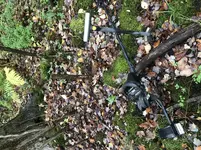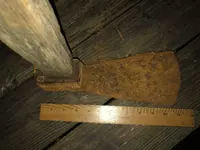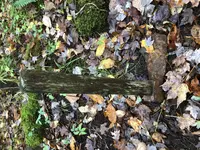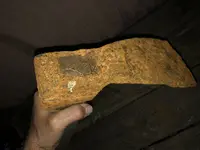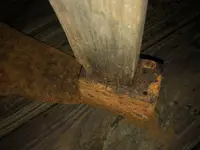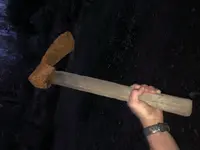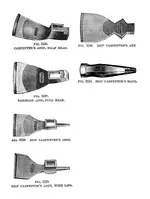Interesting, releventchair. It's mostly second growth forest now with scattered stands of dead cedar trees. There are remnants of barbed wire fences along the stone walls with very old wooden posts showing up from time to time.
I've used a spud , and draw knife to remove bark.
Not recommending such but used an adze to smooth areas with knots.
Traditionally , back when , An axe made cuts along an edge at intervals up to where timber face was to be.
Then a broad axe was used to remove those edges. Hew to the line. (Helps explain the curved handle , and single edge of a broad axe.)
Then an adze came into play to make a timbers edge more flat where surfaces were too far out of level.
The better the skill with the broad axe , the less adze work was needed. And for crude timbers , roughly hewn was good enough!
When we get to peek at old hewn timbers , some are only adzed on two sides.
Floor joists could be just one side and at bottom ends. Ect..
Old hand tools are great recoveries.
Often prized by previous owners at one time. And a sign of industrious folks.
Imagine a wife having the luxury of flat interior walls vs round logs as a sign of a family more than just surviving.
I've seen old timbers of a homes floor joists with the bark on still.
Besides bugs and potential premature rot, it hints of haste in construction.
But , not all folks had the luxury of tools or time or labor for cosmetics..
And not all were craftsmen either.
You hold a tool that cost real money back when.
And money for tools on a homestead was not always a given.
My Grandfather kept his broad axe under his front steps when not in use. (I have it in my possession today , as well as a story about it's work.)
Was it superstition that had him place it there?
Or humidity keeping the handle snug?
Not real sorry about my rambling.
I like old tool recoveries!

